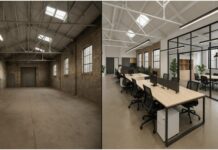In the world of the digital era, there are various Immersive technologies like AR and VR have profoundly impacted various industries. It’s revolutionizing everything from healthcare and education to manufacturing processes.
How can we measure the value and impact of AR/VR for clients and stakeholders in this digital era?
Well, this blog examines the growing importance of AR/VR in various industries, how it helps in automation testing and highlights the need to measure its impact through various industries. It also provides insights into effective strategies to assess the tangible value that these technologies can bring. Join us on our journey to the immersive frontier of AR/VR, where innovation meets measurement.
KPIs For Measuring AR/VR Project Impact
We will explore the key KPIs that serve as a compass for evaluating the success of AR/VR projects:
1) User Engagement and Interaction Metrics:
Measuring the success of AR and VR isn’t just about the adaptation of modern technologies. It also shows how seamlessly users integrate into various automation testing processes and interact with these immersive environments. The heartbeat of AR/VR is the engagement and interaction metrics, which provide insights into users’ journeys.
These metrics are like a responsive map that guides us through the maze of the user experience. They ensure that the AR/VR project achieves its objectives and leaves an indelible impression on users. The immersive future is here, and user engagement metrics are the key to unlocking experiences that resonate and last.
2) Conversion Rates and ROI:
Tangible outcomes measure success in the world of Augmented Reality and Virtual Reality, where innovation meets impact. Conversion rates, ROI, and Return on investment (ROI) are the compass that guides organizations along this transformational journey. These metrics are currency for effectiveness, converting virtual engagement into tangible results. Imagine an AR app that seamlessly transforms a curious user into a satisfied client or a training module in VR, cultivating knowledge and measurable proficiency.
Conversion rates show how AR/VR can guide users to desired actions, whether purchasing or completing a module. Combined with ROI, these metrics provide a comprehensive view of the value proposition. They show how investments in AR/VR translate into tangible results. Conversion rates and ROI are the metrics we use to validate the capabilities of the technology and its ability to deliver meaningful and measurable outcomes. In AR/VR, the success of a project is not just felt; it becomes real.
3) Learning and Skill Acquisition Metrics:
AR and VR can transform learning and skill acquisition beyond immersive visuals. The learning and skill acquisition metrics will guide you, shedding light on the potential of AR/VR to shape expertise and capabilities. Imagine an employee who not only completes a virtual module but also gains a higher level of proficiency and retention.
These metrics are used to measure the effectiveness of AR/VR in the classroom, not only the completion rate but also the improvement of skills.
Learning and Skill Acquisition Metrics will guide us on this immersive journey. They will help organizations navigate towards a future where AR/VR is not just a visual experience but an important tool for shaping competencies and driving growth.
4) Error Rates and Issue Resolution:
The reliability of an experience is woven into the success of Augmented Reality and Virtual Reality. In these complex tapestries, seamless immersion is key. The Error Rates & Issue Resolution are the watchful guardians that ensure the virtual world is a perfect extension of reality.
Imagine an AR application that seamlessly guides a user or a VR simulator that mirrors a critical real-life scenario. Any glitch can ruin the immersive experience. These metrics highlight the robustness and efficiency of AR/VR by quantifying errors.
By proactively resolving problems and monitoring error rates, organizations can improve user satisfaction but also ensure the reliability of AR/VR in areas where accuracy and precision are crucial. As we journey into the virtual world, Error rates and Issue Resolution will be the gatekeepers to ensure that the link between reality and virtuality is error-free.
5) Time-to-Market and Development Efficiency:
AR/VR is propelled forward by Time-to-market and Development Efficiency. Imagine a world where a revolutionary AR application or a transformative VR experience quickly captures the audience.
These metrics act as a clock and compass to measure the time from project inception to deployment and assess the overall development efficiency. Time is a currency that organizations must use to stay ahead in an ever-changing landscape.
Time-to-market and Development Efficiency metrics measure speed and adaptability to ever-changing market demands. They are the guardians of innovation in this dynamic journey. They ensure that AR/VR projects meet high standards and do so with the agility necessary to thrive within a rapidly changing technological landscape.
6) Hardware and Software Performance Metrics:
The seamless choreography between hardware and software determines the success or failure of an immersive experience. Hardware and Software Performance Metrics are the judges who evaluate the technology that supports the virtual experience. Imagine an AR headset that delivers crystal-clear overlays or a VR simulator running perfectly. These metrics reveal the reliability of the technology.
Organizations ensure seamless hardware-software integration by tracking parameters such as response times, device compatibility, and rendering quality. These metrics are the tuning fork of the technologist, creating a symphony with flawless execution. Hardware and Software Performance Metrics are the silent architects of AR/VR experiences. They ensure that the virtual stage will be set for a flawless performance.
7) Customer Satisfaction and Feedback:
Customer feedback and satisfaction are the compass for organizations as they navigate the complex landscape of immersive experience.
These metrics capture the user’s voice, giving valuable insight into their feelings and experiences. By actively analyzing and seeking out customer feedback, companies can better understand the AR/VR initiatives that resonate with their audience.
Customer Feedback and Satisfaction metrics are the key to continuous improvement. They allow organizations to improve their strategies, eliminate pain points, and enhance the immersive experience. These metrics are the guardians of user-centric design as the virtual frontier expands.
Thus, by aligning these KPIs with your specific goals and objectives of the AR/VR project, organizations can gain a thorough understanding and make data-driven decisions, allowing them to improve and adapt to the rapidly changing technologies continuously.
AR/VR Technology Future Trends and Their Impact on Project Success Measurement
As Augmented Reality and Virtual Reality continue to evolve, new trends will shape this landscape. This will create challenges and possibilities for measuring the success of a project.
1) Spatial Computing Integration:
Spatial Computing has become a popular trend in Augmented Reality. It is not just a technology change. This is a revolution in how we interact and perceive our environment. Spatial computing provides new immersive experiences but also forces us to rethink how we measure project successes.
Success measures must capture fluid virtual and real interactions as digital and physical realities converge. The projects will be more engaging and improve our spatial understanding. The world of digital and real-world realities is merging. The harmony between the spatial narratives will measure success.
2) 5G Connectivity:
Virtual Reality and Augmented Reality will be transformed by 5G connectivity. Imagine seamless data transfer, lightning-fast speed, and immersive experiences. Faster and more reliable connections can reduce latency. It allows high-quality streaming as well as real-time interactivity.
Success metrics no longer depend on connectivity but rather on instantaneity. Speed and pushing the limits of digital technology are key to redefining user experiences. Speed is key in this age of connectivity. AR/VR will be pushed into a seamless, high-performance dimension with 5G.
3) AI and Machine Learning Integration:
The rise of Artificial Intelligence and Machine Learning in the dynamic convergence between Augmented Reality and Virtual Reality is scripting a whole new story. Imagine a world where your AR glasses can understand your preferences in a natural way or where your VR training will adapt to your needs in real-time.
Success metrics change as AI and Machine Learning are seamlessly integrated with AR/VR apps. Technology is not the only thing that matters; intelligent, personalized, and adaptive experiences are what matter.
The success of AI-driven personalized experiences, adaptive learning algorithms, and overall user engagement are now used to measure success. In the age of AI-infused reality, success is measured beyond traditional boundaries. It’s not about what you can see but how intuitively and intelligently you can experience it.
4) Extended Reality (XR) Convergence:
XR convergence represents a paradigm change, not just a technical synergy. Navigating seamlessly between augmented overlays and virtual environments is about fluidity.
As XR becomes more prominent, success metrics are evolving to measure the smooth transitions between the two realities. This sets the stage for a world where boundaries between virtual and real reality blur into a single, compelling narrative.
5) Wearable Devices Proliferation:
Measuring a project’s success is changing as wearable devices are more common. The success of a project is not only about immersive content but also about compatibility and optimal performance on various wearable platforms.
The user experience across diverse devices is now included in the evolution of metrics, which steers AR/VR towards a future that engages and seamlessly integrates technology into our wearable lifestyles. Welcome to the future, where success will be measured by what you wear and how seamlessly technology integrates into your daily existence.
6) Healthcare and Remote Collaboration Focus:
The narrative is changing in the rapidly evolving world of Augmented Reality and Virtual Reality. A shift towards healthcare and remote collaboration has been pronounced. Imagine a scenario where AR helps surgeons with complex procedures, or VR allows seamless collaboration between continents.
Measuring project successes is increasingly important as AR/VR applications expand into new healthcare and remote working areas. The success metrics go beyond the traditional parameters to measure virtual collaboration’s impact on patient outcomes.
In this transformational space, success doesn’t only mean technological innovation. It’s also about improving healthcare and collaboration efficiency in an increasingly connected world.
7) Environmental and Social Impact:
As AR/VR technologies mature, project success is measured regarding sustainability, ethical usage, and social responsibility.
The metrics of success now include the reduction of carbon footprints, ethical considerations for content creation, and the promotion of inclusion. In the conscious age, success is measured by technological wonders and their contribution to a sustainable and equitable future. Welcome to the world where positive impact is not just virtual but also leaves a physical footprint.
End Note
The measurement of the impact of an AR/VR project transcends the traditional metrics in the fascinating world where innovation and immersive experiences converge. The real impact of AR/VR projects is not just about the data. It’s also about user engagement, seamless integration with technology, using automation testing tools like LambdaTest, and transformations in the real world. The compass for success is more than a technological milestone. It guides us to create experiences that empower and redefine our perception of the world. The value of AR/VR is not confined to pixels or code. It’s also woven into enhanced learning, user satisfaction, and tangible contributions to industry and society.



















